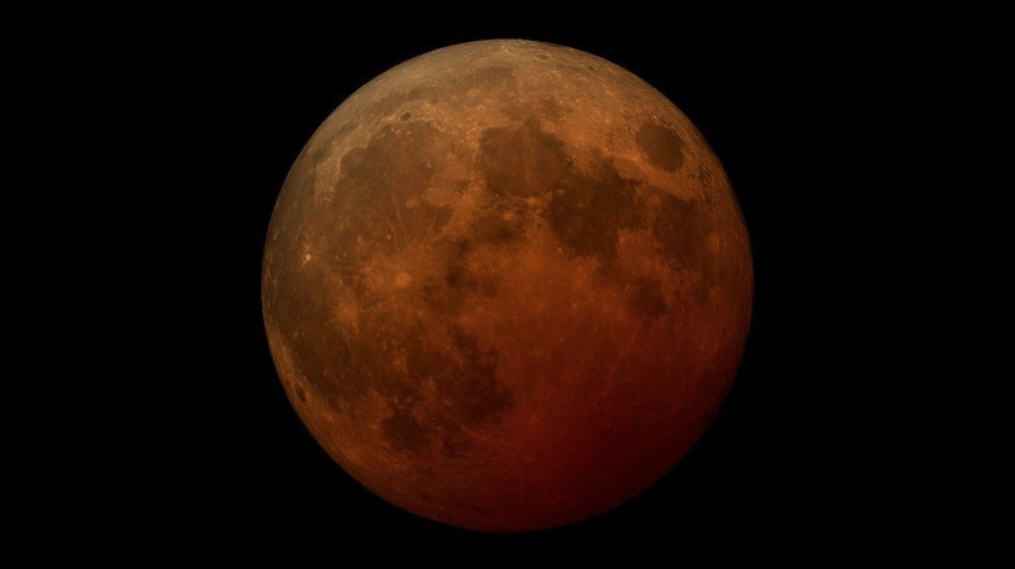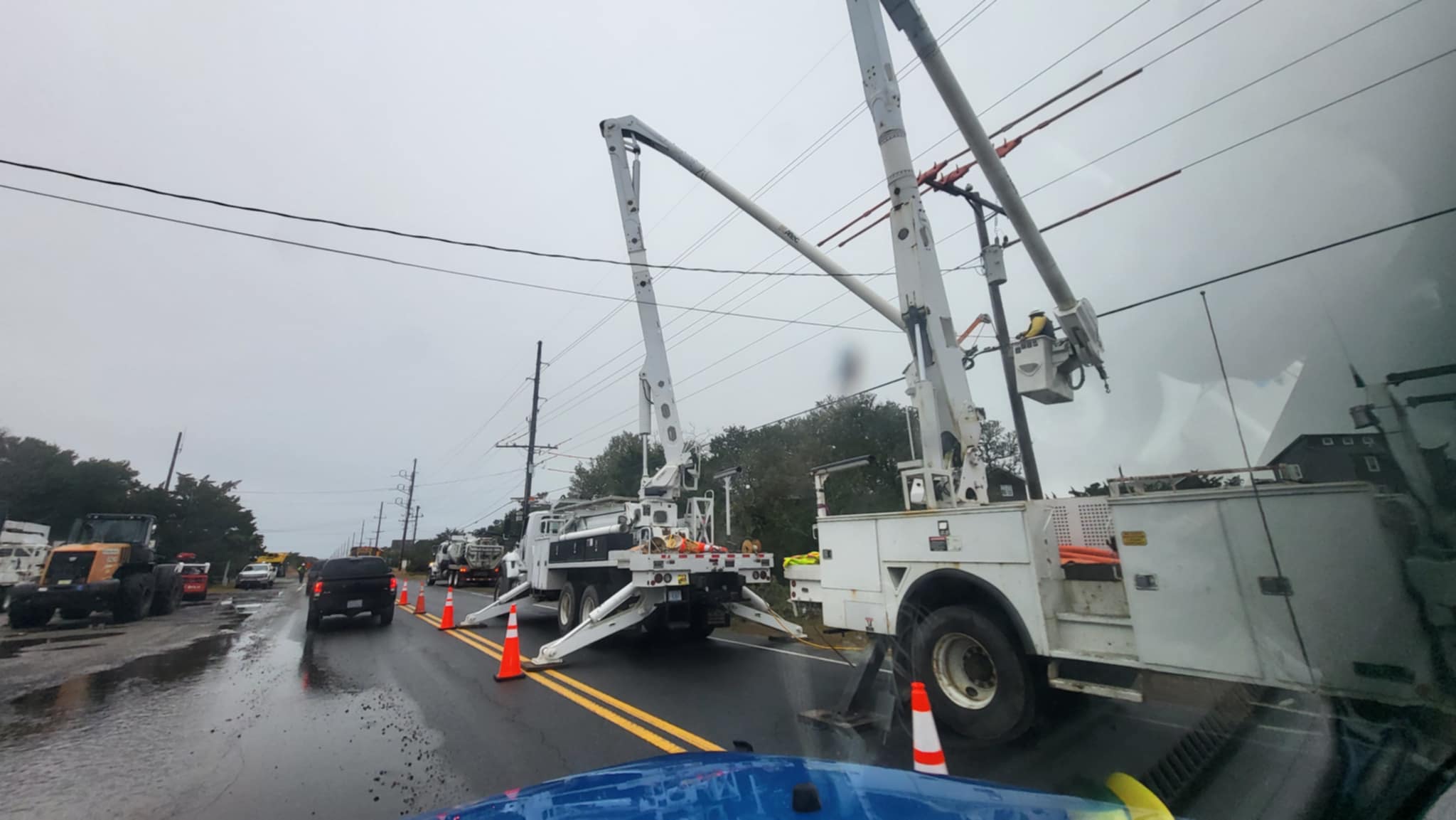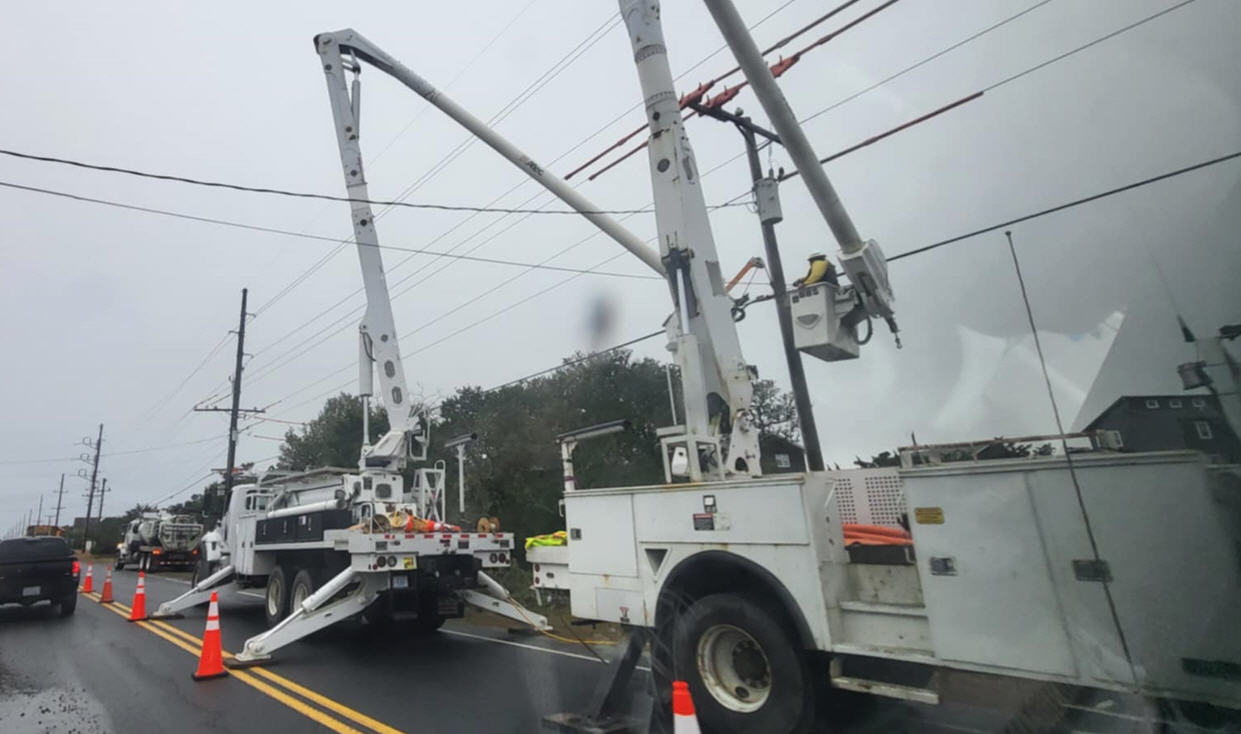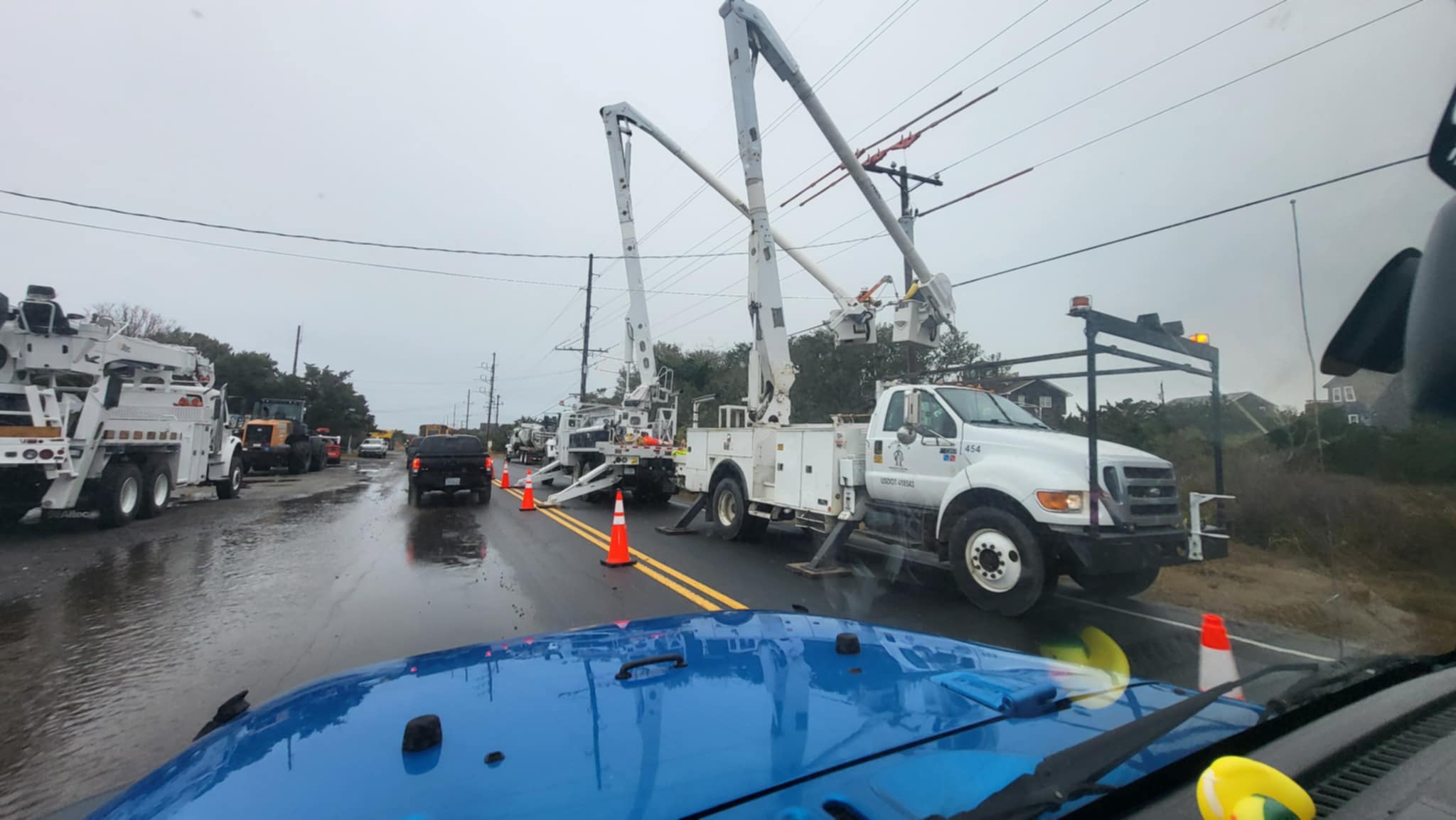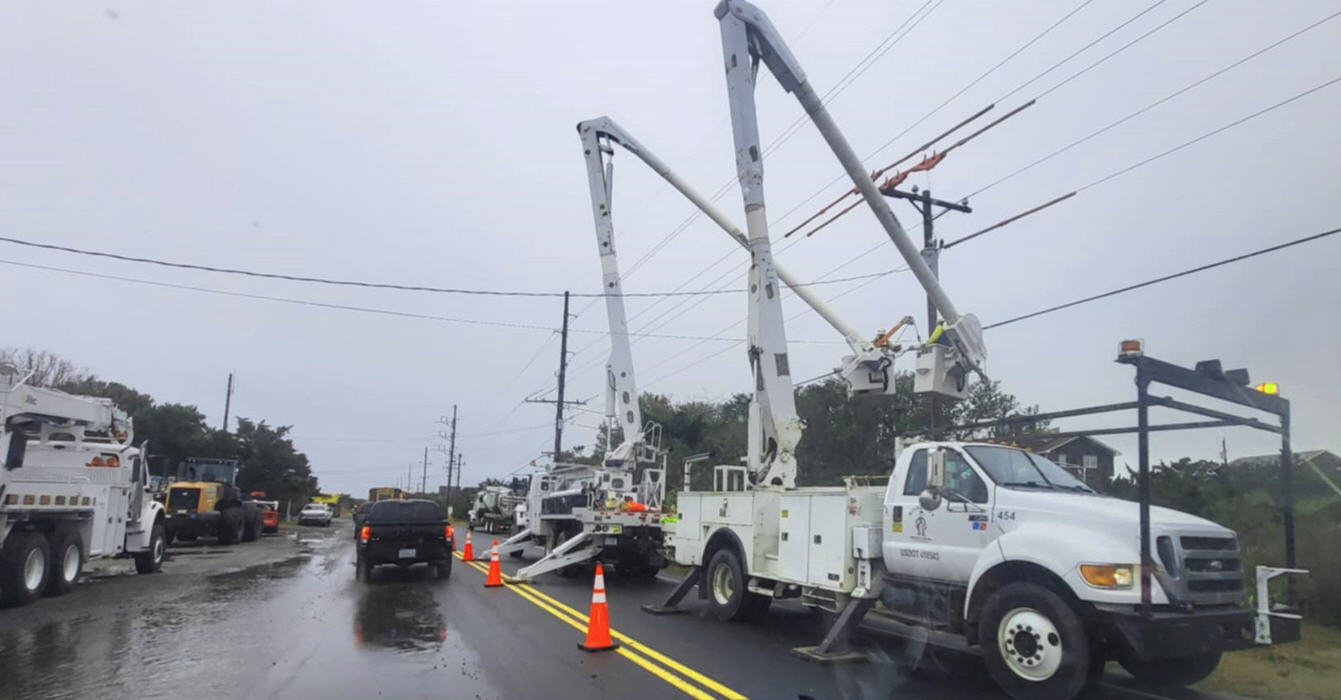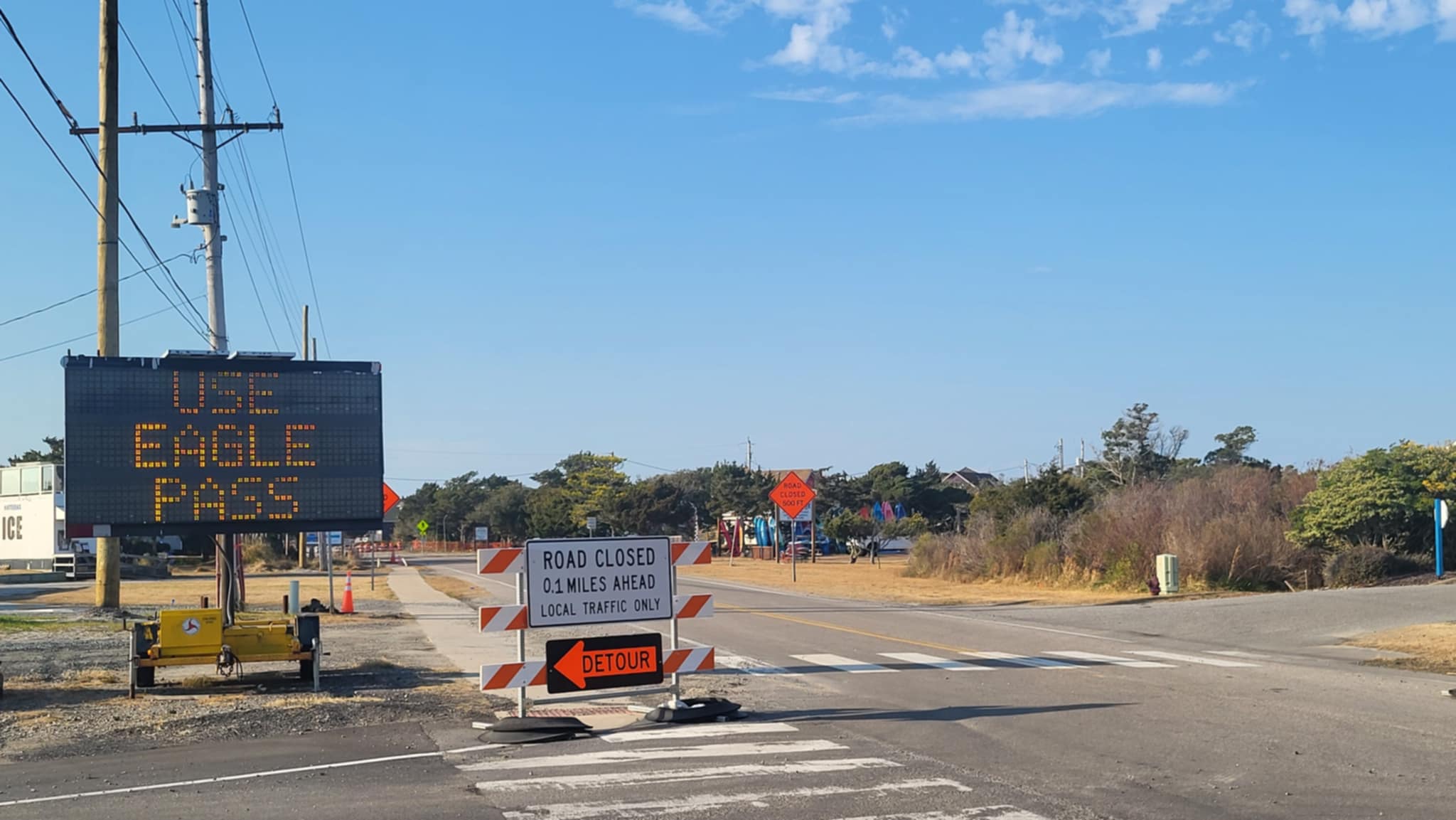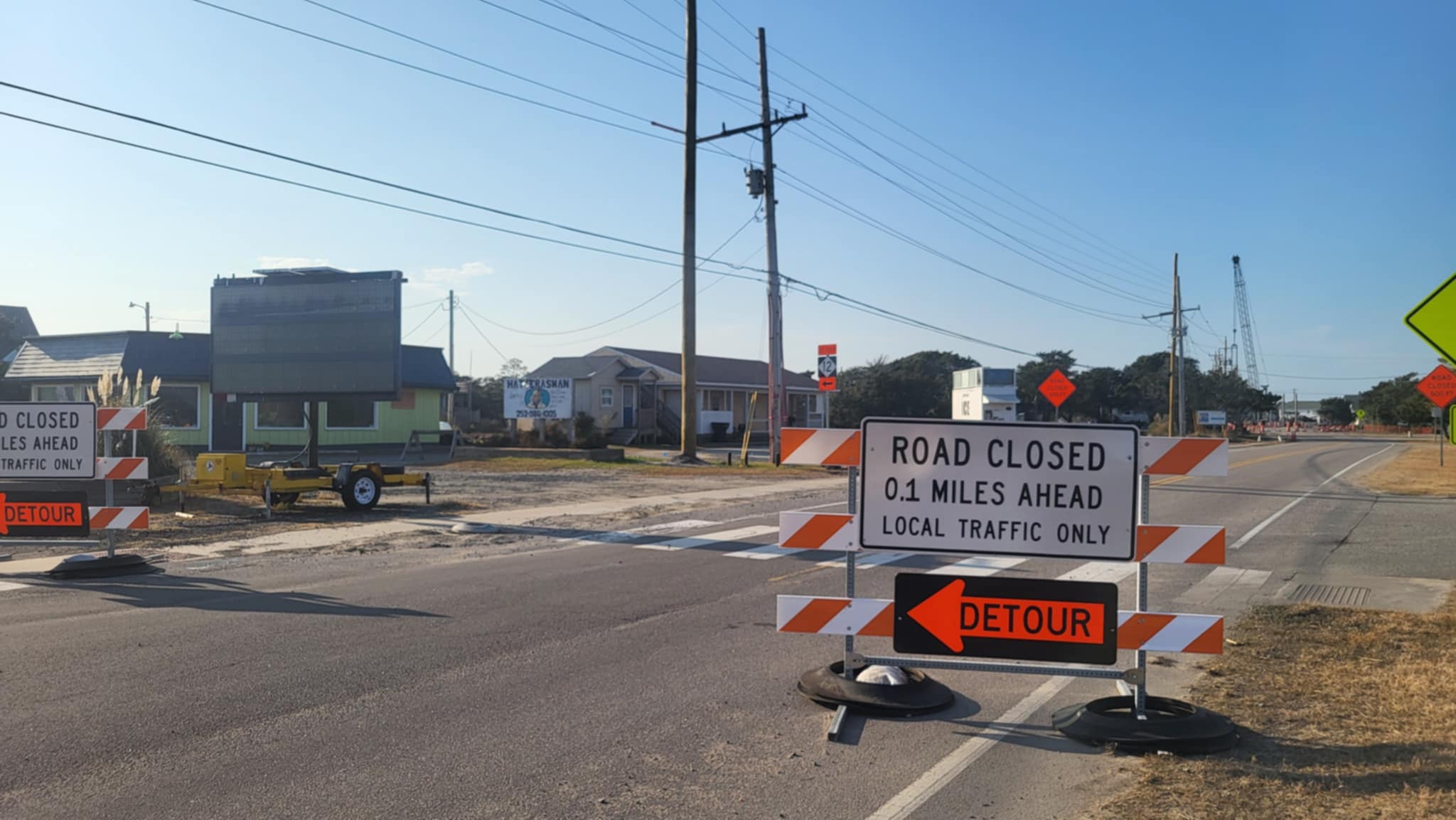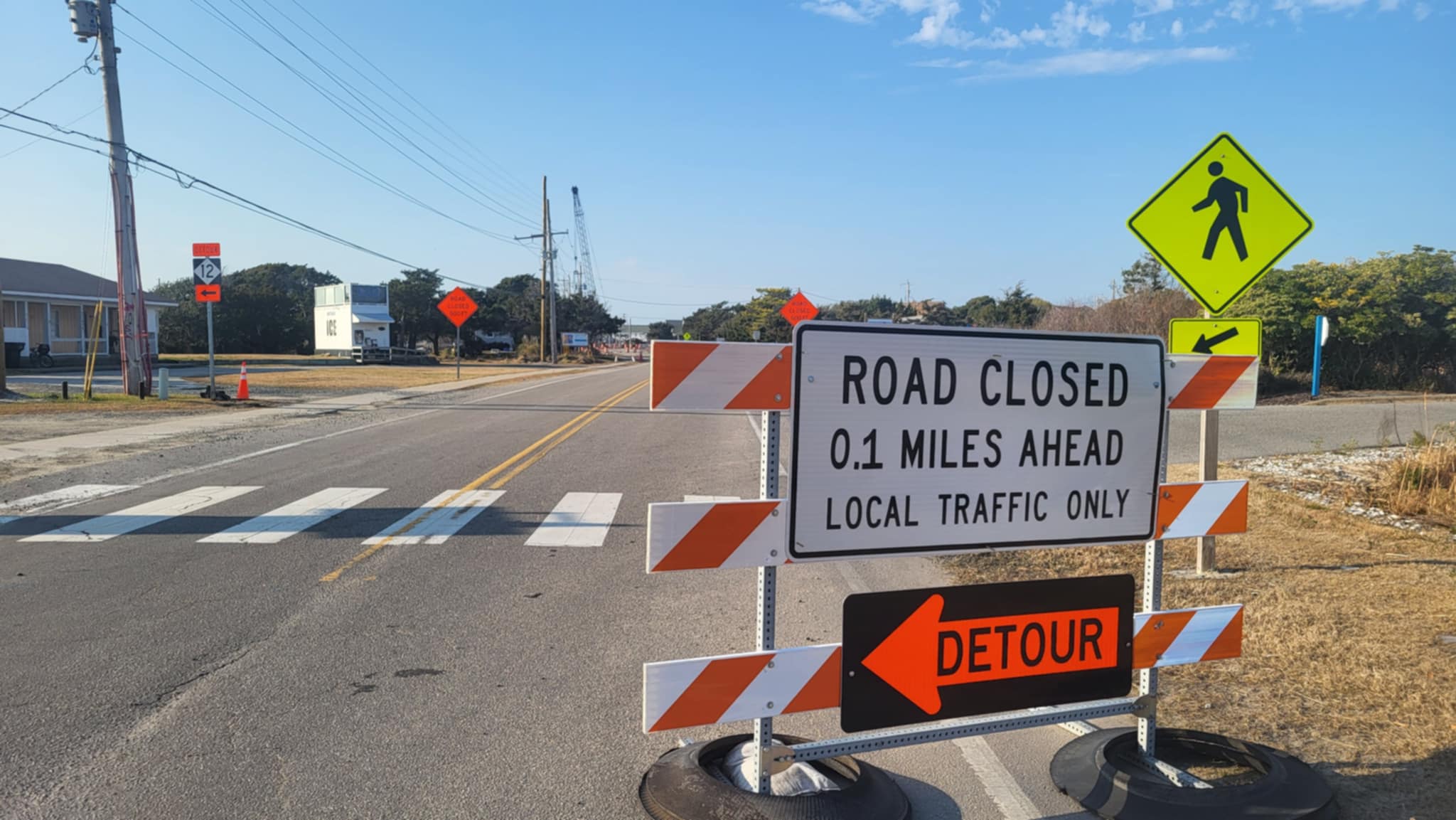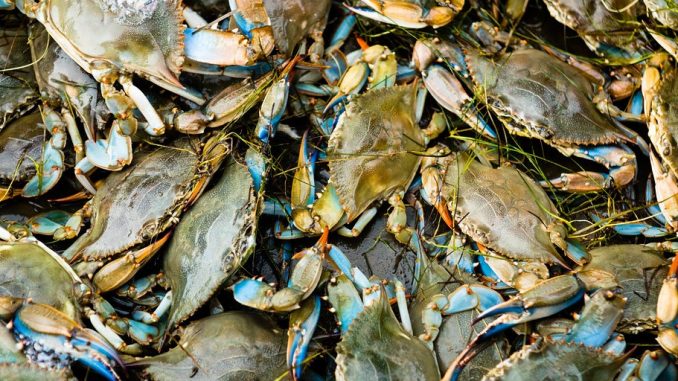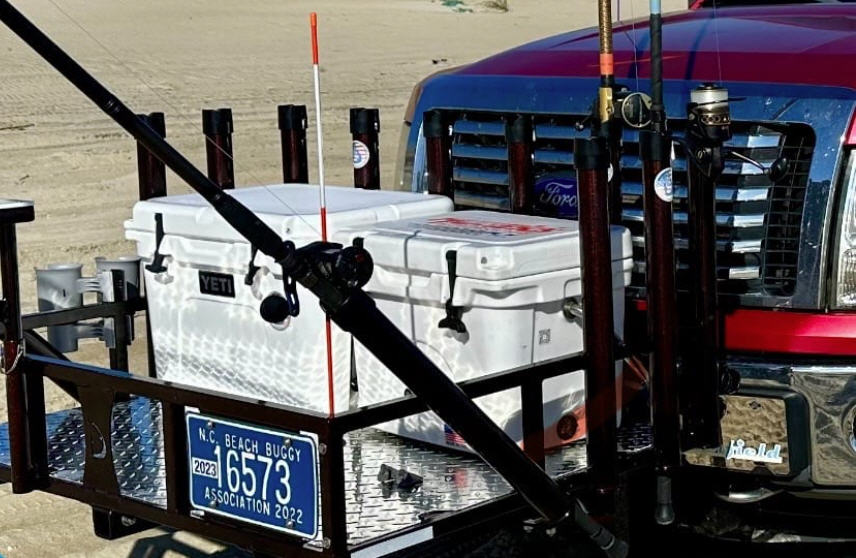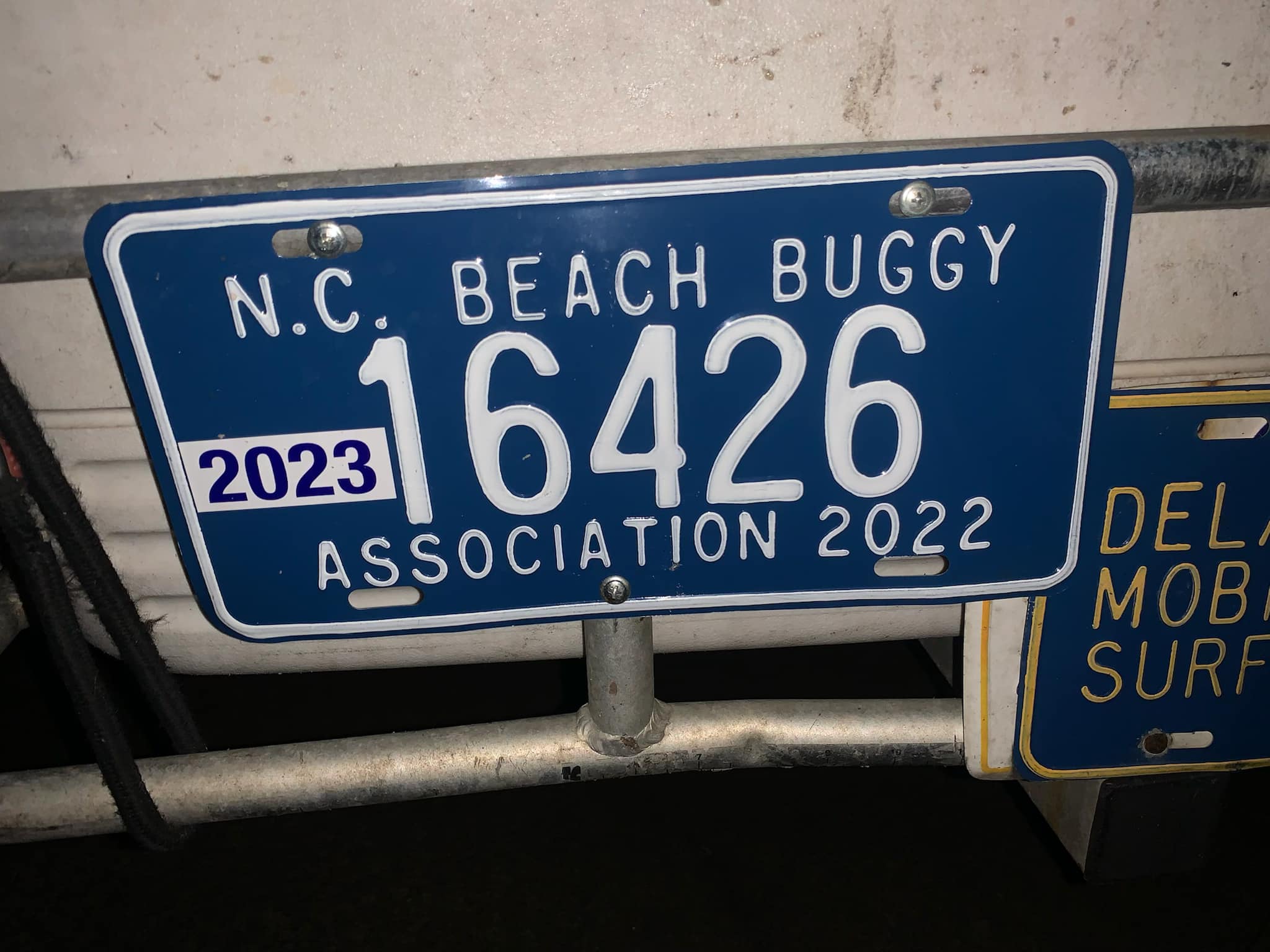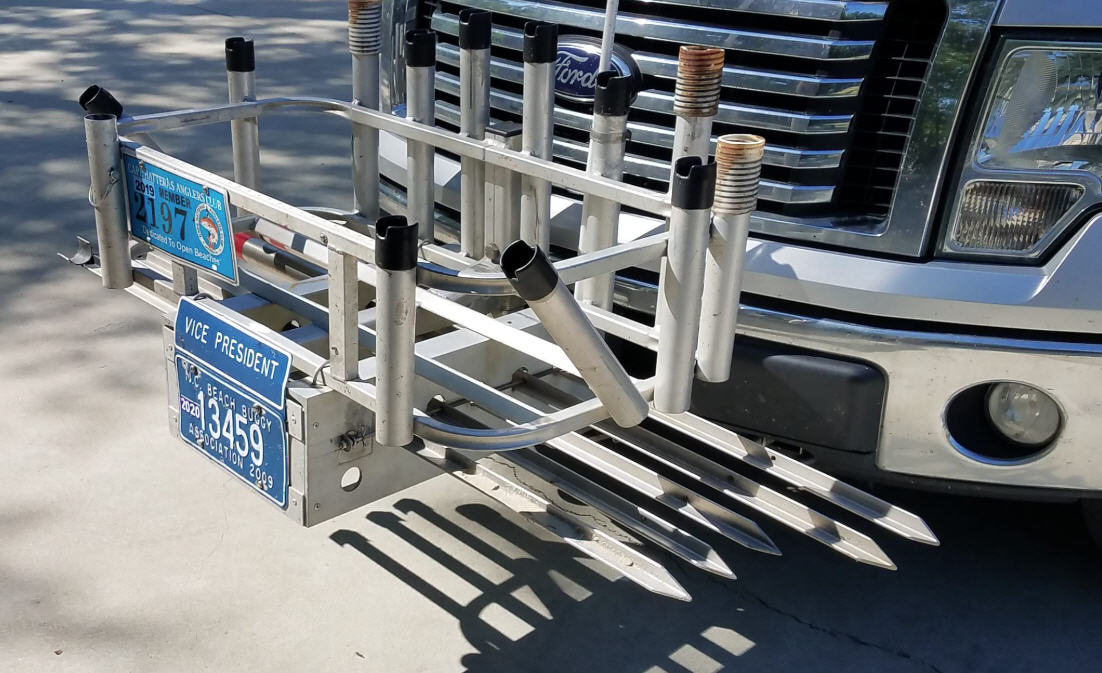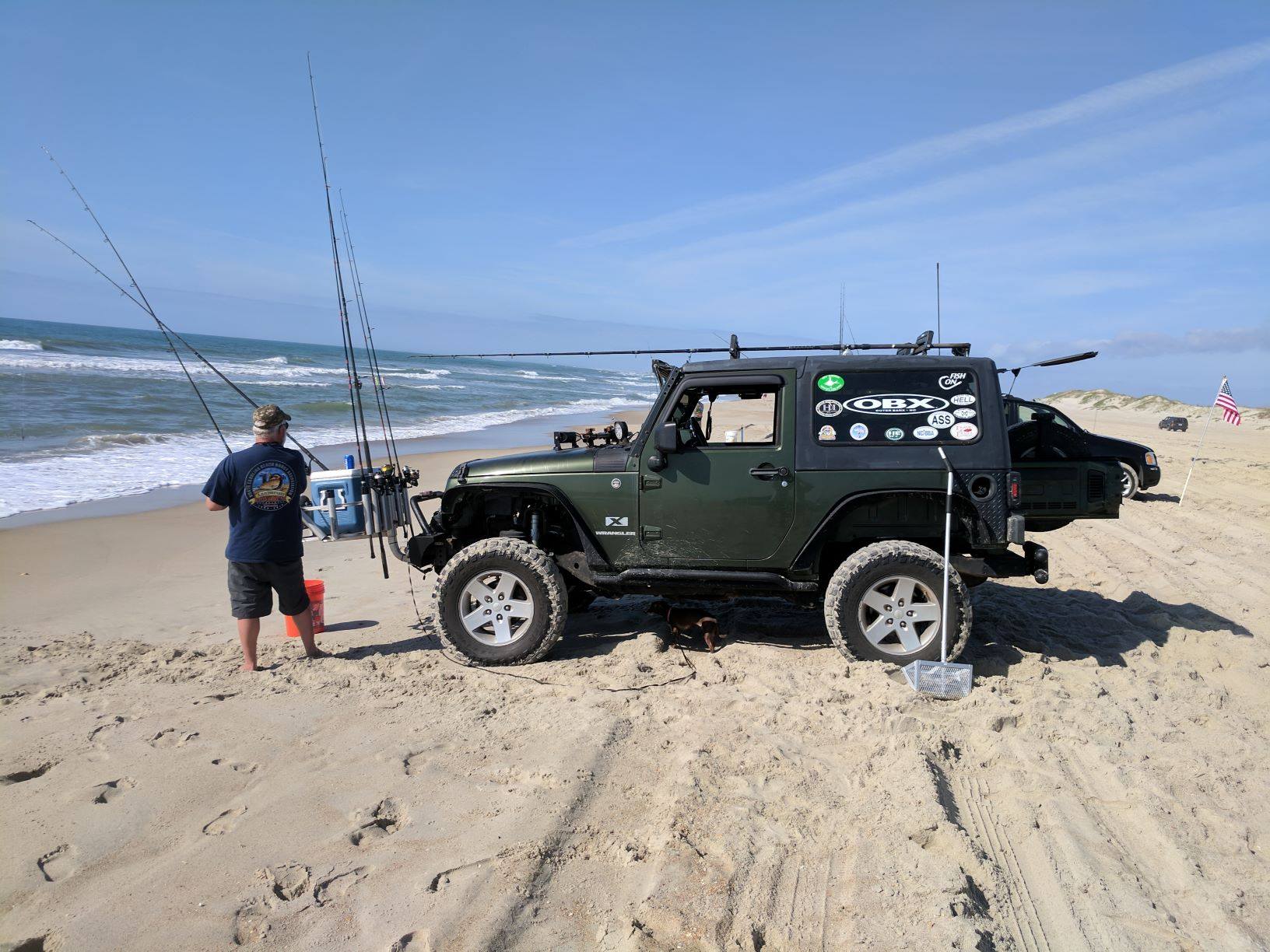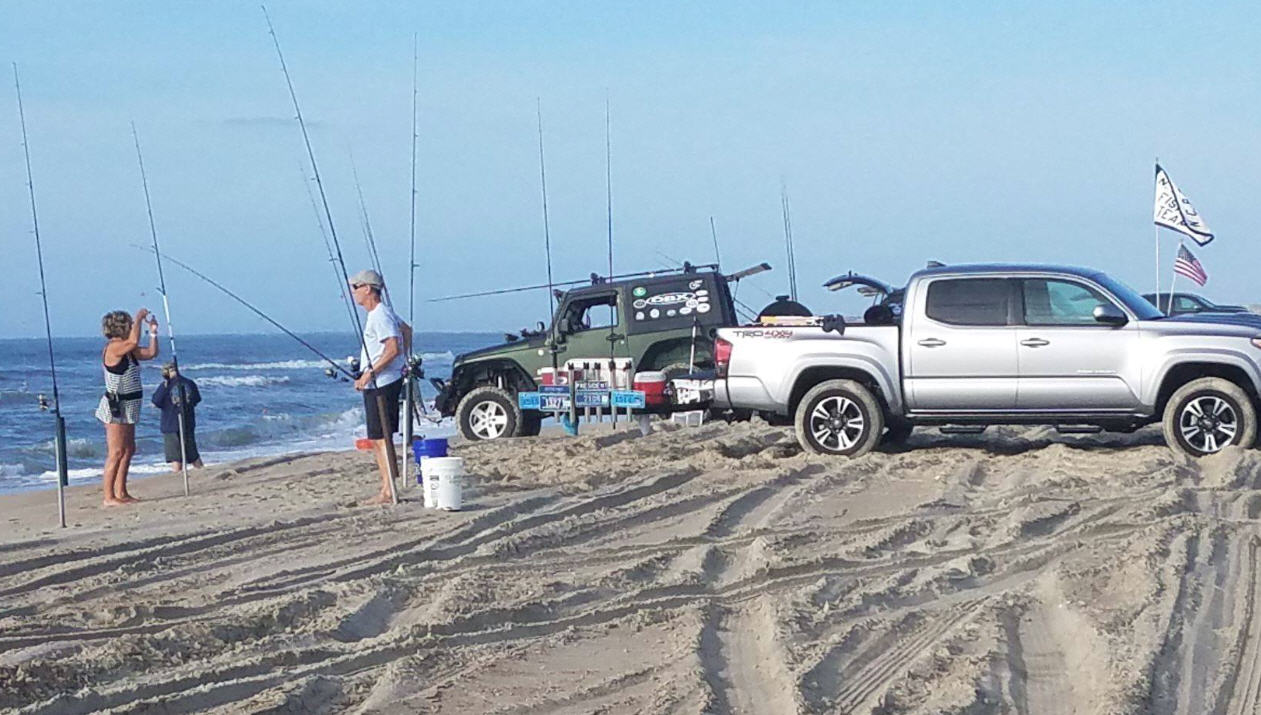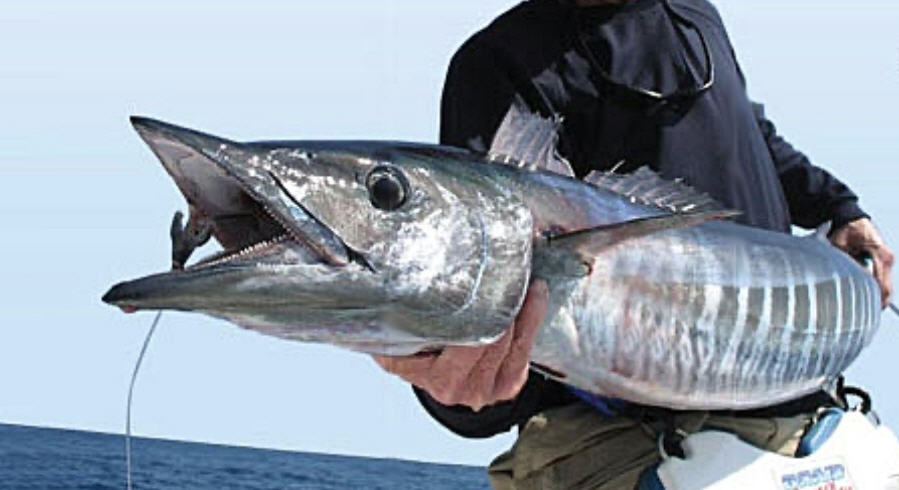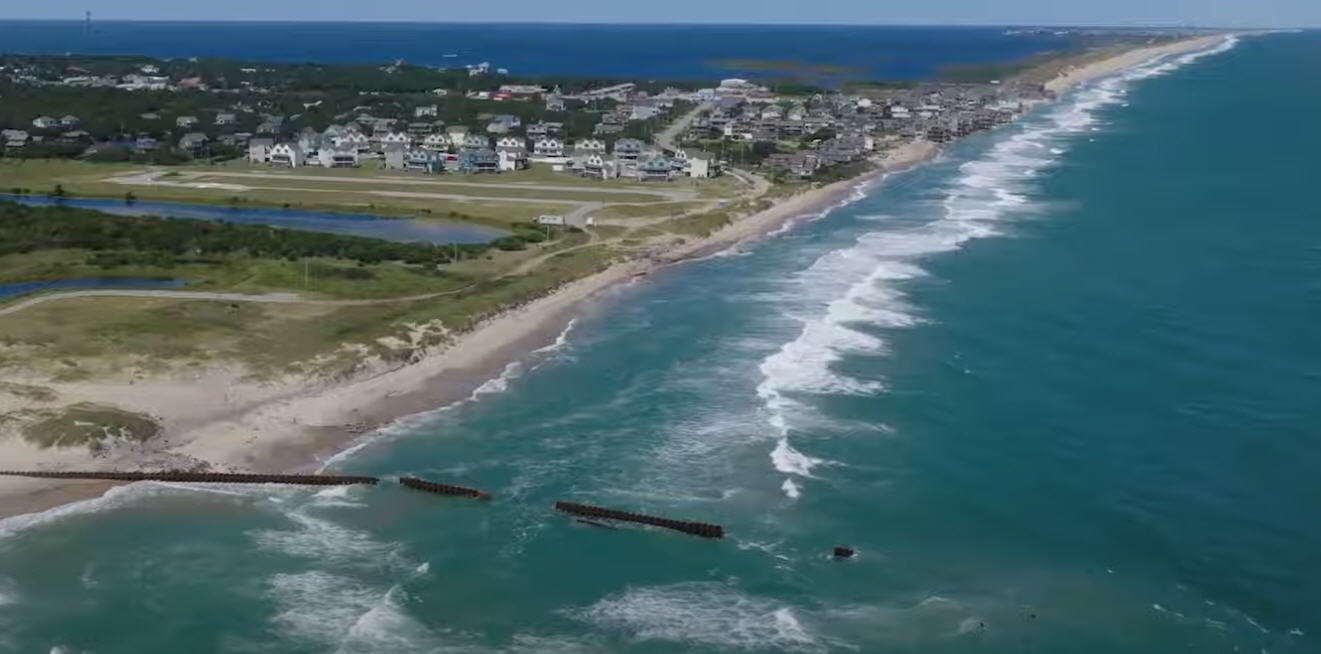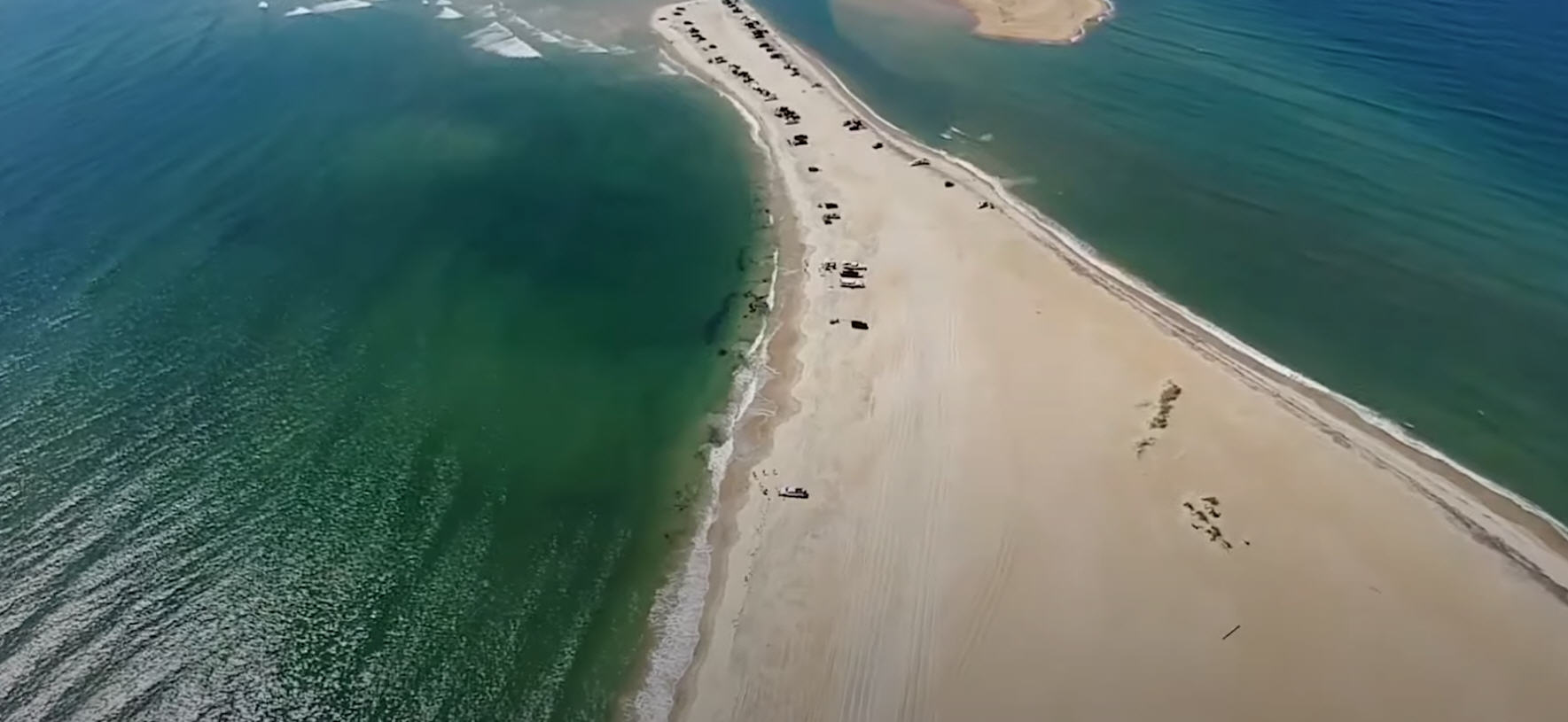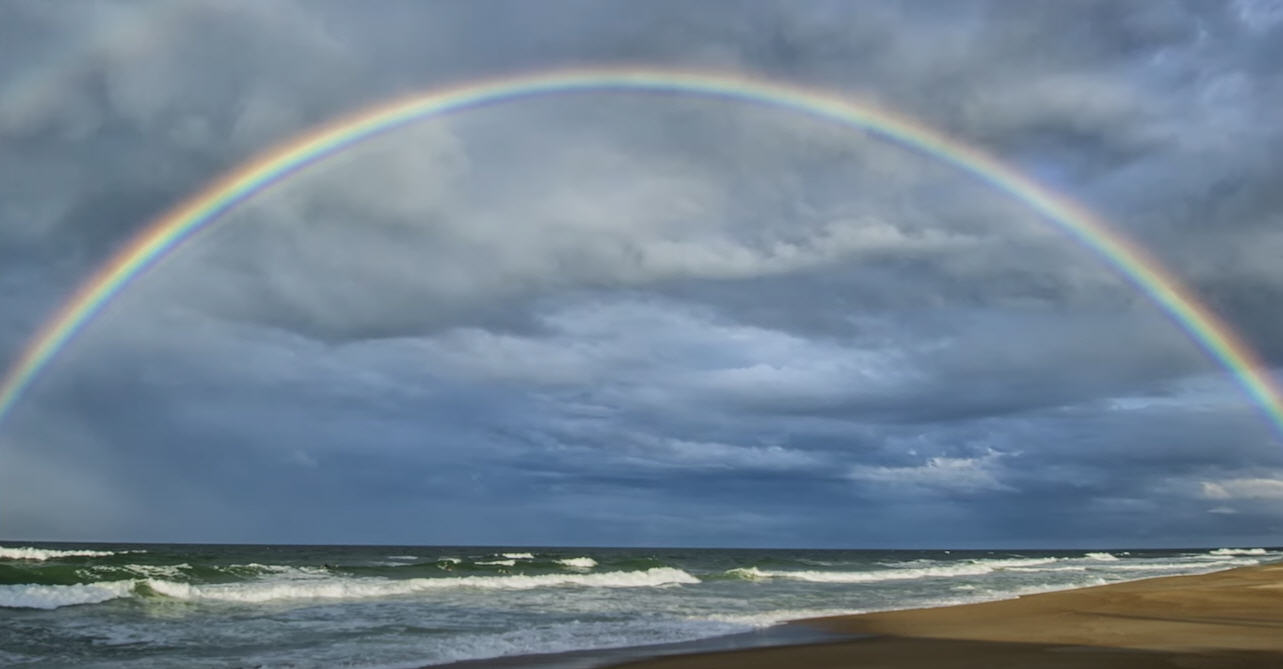Recent whale deaths unfortunate but not alarming, according to scientists

In the morning hours, Carova Beach is quiet. In a few months, it will be packed with visitors. The popular spot in the Outer Banks is known for its wild horses and remote location, but it’s early March, and the scene is empty apart from seabirds diving, shorebirds scurrying, and the occasional truck passing by on the offroad path.
Eventually, an unusual sight emerges from the deserted shoreline: a 26-foot-long dead minke whale.
Soon the team arrives. Researchers from North Carolina State University, North Carolina Division of Marine Fisheries, University of North Carolina Wilmington, North Carolina Aquarium and its Jennette’s Pier, and volunteers have come from across the state to perform a necropsy.
When a whale dies offshore, the carcass eventually sinks and becomes a whale fall, providing vital food and habitat for deep-sea scavengers, invertebrates, and microbes for years or even decades. When a whale carcass washes ashore, its body is used in a different way.
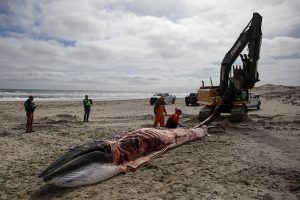
The main purpose of a necropsy is to investigate the cause of death, but samples are also taken to support a myriad of research. Tissue was collected to study diet and dive physiology. The eyes will be used in research about marine mammal vision. Feces were collected for parasitology analysis. The dorsal fin was radiographed to map out blood vessels and inform future biological sampling on live animals, just to name a few. Additionally, a variety of samples were gathered to archive for future research or share with collaborators.
This female, who died from a bacterial disease called brucellosis was the third dead whale found in the region in just as many days.
Earlier that week a humpback whale washed ashore in Virginia Beach, followed by another at nearby False Cape State Park. The same day this necropsy was performed, a pregnant and a juvenile dwarf sperm whale washed ashore in Nags Head. The following day, a bottlenose dolphin was found at Nags Head and a common dolphin at Southern Shores. In April, a nursing North Atlantic right whale was found off Virginia Beach, a victim of a vessel strike, and a humpback whale was found off the coast of Rodanthe entangled in fishing gear.
While it’s unusual to find strandings so close together in space and time, Dr. Craig Harms, a researcher from the NC State College of Veterinary Medicine and Center for Marine Sciences and Technology, or CMAST, says that may just be an unfortunate statistical anomaly.
That blip is because of storms that create strong currents and waves that bring ashore carcasses that may have otherwise remained at sea.
Further, spring marks migration season in the area, when larger numbers of whales are making the journey back north from their wintering grounds. The swelling population also means that more whales die here.
Even so, this minke whale is part of a broader trend.
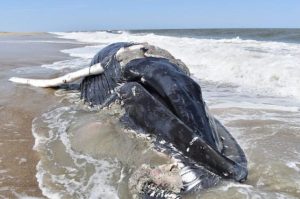
Since 2017, elevated minke whale mortalities have occurred along the Atlantic Coast from Maine through South Carolina, totaling 166 thus far, according to National Oceanic and Atmospheric Administration records.
Minke whales aren’t alone in this predicament. Unusual mortality events, or UMEs, are also active for the North Atlantic right whale and humpback whale. Causes include vessel strikes, fishing entanglements and disease.
Climate change also plays a role. “Warming waters are bringing fish into areas they haven’t gone before and it’s bringing whales closer to shore,” said Blair Mase-Guthrie, NOAA’s Southeast Region marine mammal stranding coordinator. “So, the effect of that, because they’re closer to shore they’re being impacted by human-related events such as getting entangled in fishing gear and getting hit by ships and boats.”
According to NOAA, about 40% of humpback whales necropsied have died from either vessel strikes or fishing entanglements.
Some have tried to place blame for the mammal deaths on offshore wind development, but such claims are unsupported by research. Arguments against offshore wind liken noise from surveys, construction and operation of turbines to seismic air guns used in oil and gas surveys or tactical military sonar. Wind energy advocates, however, contend that noise from offshore wind activities has a smaller impact zone because they produce lower noise at a higher frequency and narrower beamwidth than those related to fossil fuel exploration.

Further, precautions are put into place to minimize impact. For example, pile-driving has been halted during months when endangered right whales are likely to be present, and observers are required to be present to search for marine animals nearby and stop pile-driving if whales are seen.
Marine biologist Dr. Andrew Read, director of the Duke University Marine Lab in Beaufort, studies marine vertebrates, particularly longer-lived species such as whales. He also is a commissioner of the Federal Marine Mammal Commission.
One area Read says needs more study is the effect turbines could have on the distribution of zooplankton near wind farms, but thus far, studies have not been conclusive.
“Let me say clearly as a scientist to you, there is absolutely no evidence, not a single dead animal has ever been examined on the U.S. East Coast that we can tie to mortality associated with offshore wind. Not one,” Read said. “And yet, there’s this whole ecosystem of people and organizations out there that, because of politics and economics and how those two are intertwined, that will tell you, ‘Of course, it’s offshore wind.’”
While the debate is unlikely to go away anytime soon, Read said that, in the meantime, researchers must keep cutting through the disinformation noise. “I think we have to be true to our science and say what we know,” he said. “But we also have to not let people get away with mischaracterizing what we say.”
To report an injured, entangled or dead marine mammal, call the NOAA Fisheries 24-hour Stranding Hotline at 866-755-6622.





